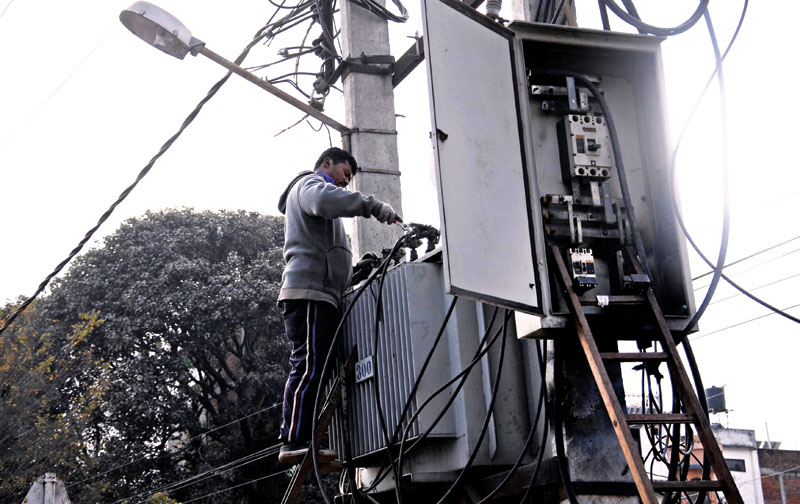Share of electricity to rise in energy mix
Per capita electricity demand is likely to soar to 978.3 units by 2030 in the country if the economy expands at the rate of five per cent per annum, a latest study says.
Per capita electricity consumption currently stands at 175 units, which is one of the lowest in the world.
Although forecasts on energy and electricity demand have been made in the past by many governments and multilateral agencies, those studies have failed to take latent demand into consideration.
The latest study, conducted jointly by the National Planning Commission and the Investment Board Nepal, on the other hand, has taken changing social needs of the population, such as demand for transportation, lighting and air-conditioning, into account.
The demand for energy depends on demography, including size of urban and rural population, population growth rate and strength of labour force; economic growth rate; energy consumption by various industries, such as agriculture, construction and mining; modes of freight and passenger transportation; and household usage, says the report titled ‘Energy Demand Projection 2030’.
The study, conducted on the basis of Model for Analysis of Energy Demand (MAED) developed by the International Atomic Energy Agency, says that the country’s population will grow to 39.3 million by 2030 from 27.6 million in 2014. Also, the share of urban population will grow to 49 per cent of the total population by 2030 from 40 per cent in 2014, while number of households will jump from 5.4 million in 2014 to 7.7 million by 2030.
Because of these demographic changes and considering economy will grow by five per cent per annum till 2030, Nepal’s electricity demand will surge to 33.4 billion units by 2030, says the report. To meet this demand, Nepal must have installed electricity generation capacity of 6,358 megawatts, adds the report.
This installed capacity is, however, for final usage. “So, a reserve capacity is required for transmission losses (1,211 MW) and outages (2,523 MW),” says the report. “This means the required installed capacity to service demand in 2030 hovers around 10,092 MW.”
However, the installed capacity projection has been made at 60 per cent system capacity factor. This means plants that generate electricity are estimated to operate for 60 per cent of the time in a year.
“(But) given the current imperative of building storage plants and anticipated capacity increases in other renewable, such as wind and solar, the system capacity will likely be lower than 60 per cent,” says the report, adding, “At a system capacity factor of 50 per cent and 47 per cent, the required installed capacities to service demand in 2030 will be 12,000 MW and 12,757 MW, respectively.”
The report says if economy continues to expand by five per cent per annum till 2030, agriculture’s share in the economy, which currently stands at 33 per cent, will drop to 22 per cent. On the other hand, share of mining and manufacturing in the gross domestic product will jump from seven per cent at present to 12 per cent by 2030, says the report. However, the share of services sector in the economy, which currently stands at 52 per cent, will remain at almost the same level of 54 per cent in 2030.
As economic activities change over the years, electricity will also displace many fuels that are currently being used, adds the report.
For instance, irrigation will be powered exclusively by electricity, while fossil fuel, such as coal, and motor fuel, such as diesel and petrol, used in construction, mining and manufacturing sectors will be partially replaced by electricity. Also, electricity is expected to replace a small fraction of total freight and passenger transport energy requirement due to use of electric powered trains, buses and battery-powered vehicles.
The report also says that electricity will fulfil 52 per cent of total cooking energy needs of urban households by 2030 from little over three per cent at present, while 45 per cent of rural cooking energy needs will be fulfilled by electricity. “These changes in energy consumption pattern will increase the share of electricity in energy mix to 23 per cent by 2030 from existing six per cent,” says the report.






